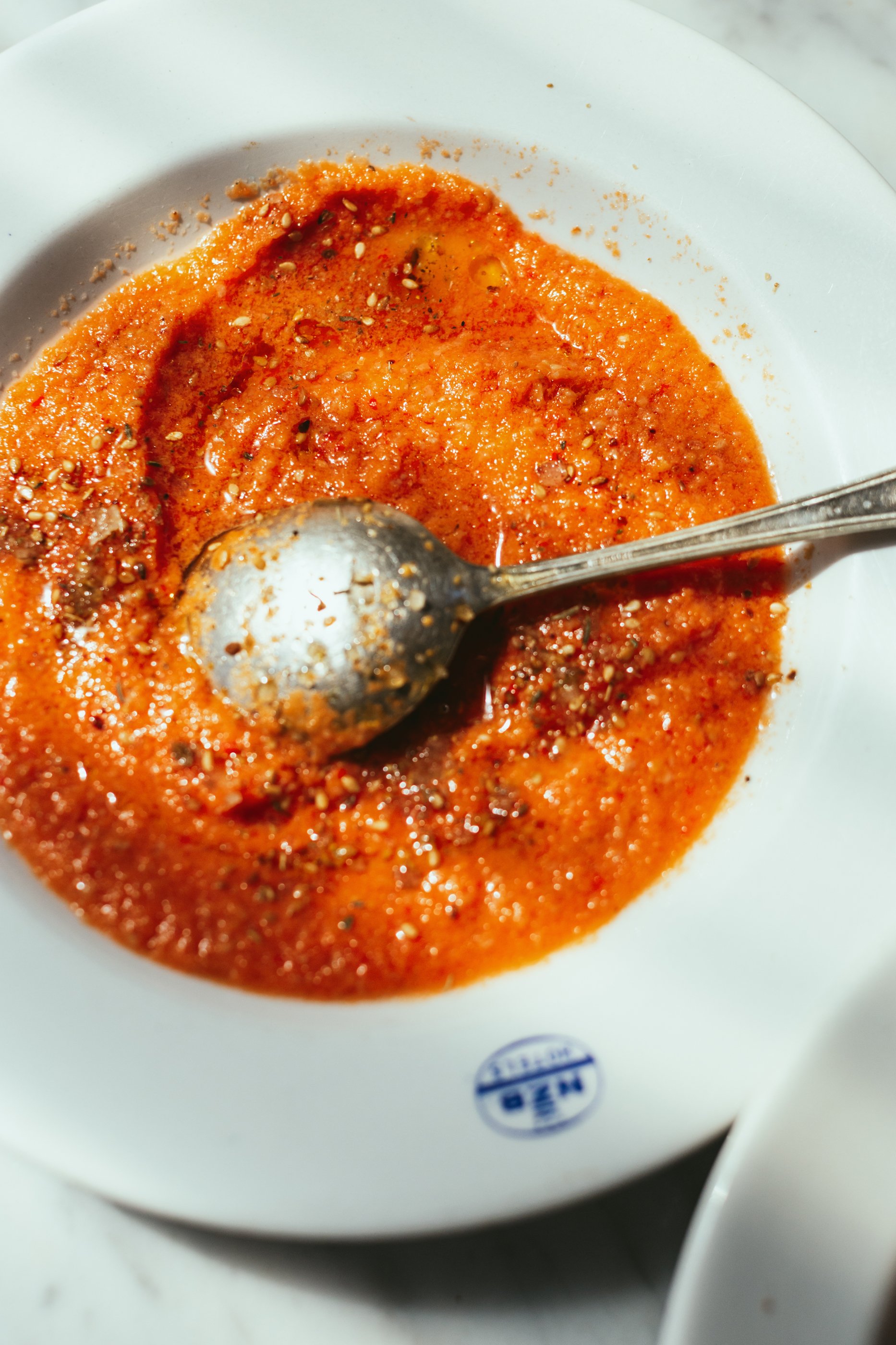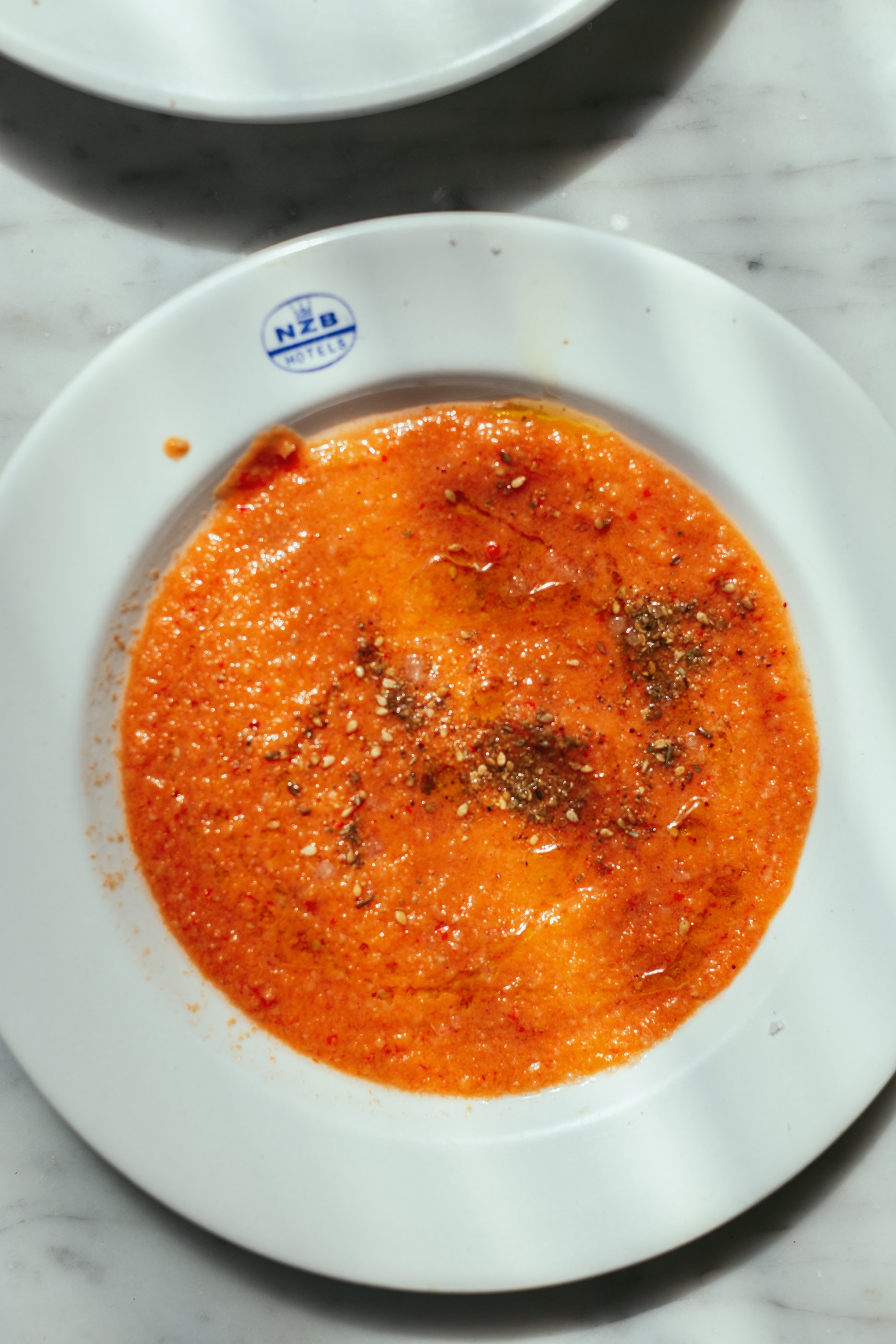Still, I will convey that traditional homemade gazpacho will always be my favourite, hence this recipe. I love that gazpacho is a mixture between a drink and a salad. It is easy to make and mistake-free; all you need to make sure of is to pick up flavourful ingredients. Cook what needs to be done in advance, drop in the blender with tons of garlic, mix and ya esta! You have an unpretentious, delicious, colourful soup. As I said, best consumed chilled. I also like to drop some toasted croutons to garnish with a drizzle of olive oil and a dish of olives on the side. Get them garlicky too.
For too long, as a westernised society, we've been living without acknowledging our foods' where, how, and their impact. And while we are here to joyfully learn how to prepare a traditional Spanish gazpacho, it is essential to re-attach some context to our food and, at the very least, improve our general culture in parallel to practising in the kitchen.
A quick story of tomato, the star ingredient of this traditional gazpacho
Tomato is part of the Solanaceae family, the same as the potato, eggplant and capsicum, the latest being an ingredient of this gazpacho recipe. An endemic plant from Central America, specifically Peru and Mexico, where it was first grown as food, the tomato's name originates from the Aztec word "tomatl", which converted into "tomate" after the Spanish invaders discovered the fruits in the 16th century. It was then brought back to Europe, spreading around the Mediterranean basin in the 17th century. At the beginning of the 1900s, following the immigration wave from Europe, the fruit crossed the Atlantic ocean again, growing popular in North America—oh, hello, ketchup! Later on, tomatoes became available worldwide through the globalisation of agriculture, being a plant relatively easy to grow, producing voluminous wields for significant culinary versatility. China is the world's largest tomato producer.
Unfortunately, its popularity worldwide pushed for industrial off-ground cultivation, favouring easy-to-transport, firm flesh varieties, resisting diseases but compromising with flavour, resulting in fruits with no taste. The moral of this story is if you are consuming tomatoes, aim to consume organic produce grown in your country in a hot environment; its natural season is likely to be Summer. Tomatoes are simple to grow in your garden or sunny balcony—just an idea.
Gazpacho, the cold soup that will safeguard your body
This traditional gazpacho contains tomatoes, cucumber, capsicum, garlic and olive oil, and so is packed with vitamins—A, B, E and C in addition to vitamins K, B6 and folate acid, boosting immunity and improving overall body metabolism. On top of vitamins, gazpacho is rich in minerals and oligo-elements such as potassium, zinc, copper, manganese, fluor, nickel and iodine, all necessary to regenerate body tissues, synthesise nutrients and produce antibodies. They also help reduce inflammation, cholesterol levels and blood pressure, decreasing heart disease risks. Gazpacho also contains the same proportion of carbohydrates and electrolytes found in human blood, maintaining a healthy acid-base balance in body cells, similar to an isotonic drink. Finally, given its base ingredients contain high water levels, this colourful meal will keep you hydrated. Overall, traditional gazpacho is a nutritious meal to drink without moderation. Enjoy it!








